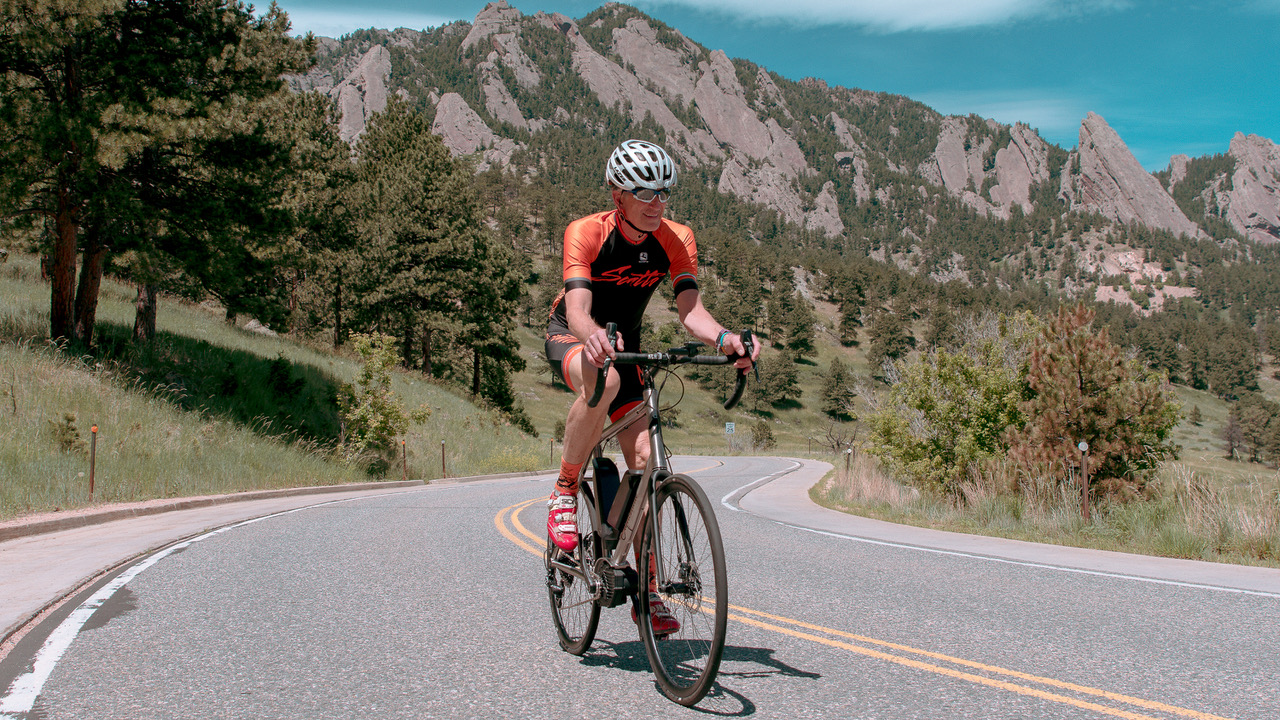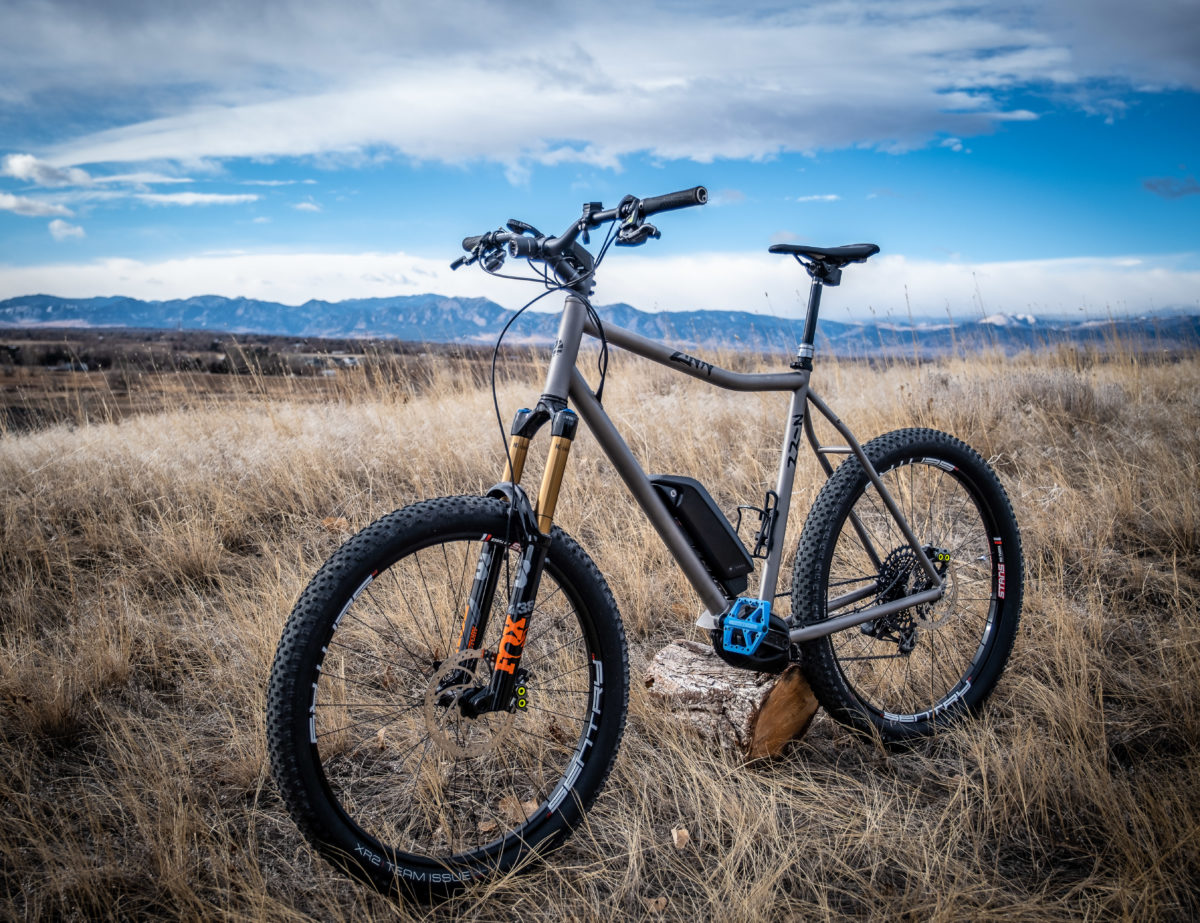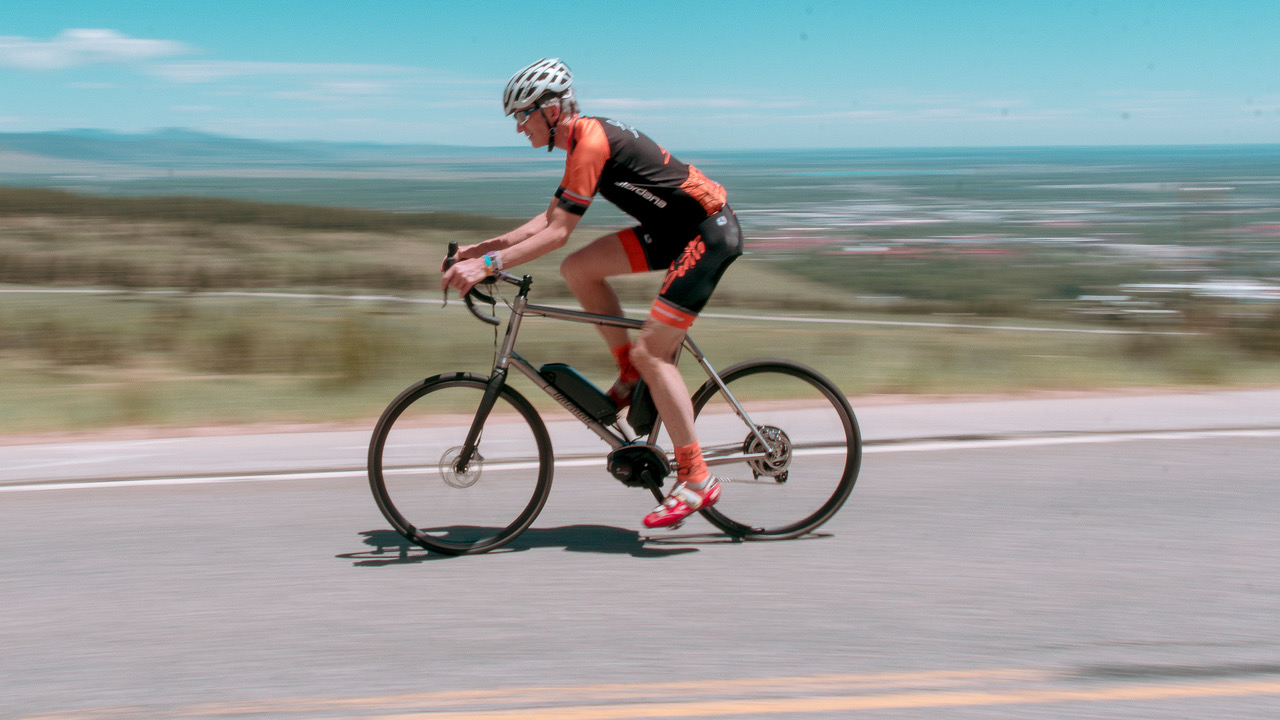When I built myself an e-bike and started riding it, I was coming off of 35 years of racing bikes and cross-country skis. At age 55, I was still winning lots of bike races until I suddenly developed a heart arrhythmia. I struggled for a few years with finding satisfying outdoor activities that didn’t set off my heart arrhythmia, and my cycling range had become shortened to a very small radius around my house, ridden solo at a slow pace. It was repetitive and uninteresting for someone used to using the bike to have fun and get to far-flung beautiful places while feeling my body get stronger. Fortunately, I soon discovered e–bikes and the many health benefits they offer.

Riding my new e-bike was a revelation for me that I detailed in VeloNews. It contributed enormously not only to my heart health but also to my mental health. Contrary to the belief of many hard-core cyclists that an e-bike doesn’t provide exercise, it made an important contribution to my overall physical health.
The health benefits of e–bikes are by no means limited to people with my particular heart condition; they are available to people over a wide range of the health spectrum. A recent study documented the benefits of riding e–bikes for the self-management of type 2 diabetes. At an opposing pinnacle of human fitness, Tour de France (TdF) racers must get out and ride for a few hours on each of the two rest days of the three-week race or they will not be able to ride as hard when the race resumes the next day. Some racers now sometimes employ e-bikes on the TdF’s rest days for fun, low-intensity riding.
E-Bikes are Perfect for Riding in Low and Moderate Heart-Rate Zones
By eliminating the pounding stress on the joints that running and other weight-bearing sports create, cycling is a great exercise for people who have hip, knee, ankle, or foot problems or are carrying too much weight. But riders who are overweight, out of shape, or have health conditions limiting their aerobic capacity or strength cannot ride up a moderate hill on a standard bike without elevating their heart rate to a counterproductive, or possibly even dangerous, level. That’s where the health benefits of e–bikes come into play. An e-bike offers riders with varying levels of health the ability to ride up big climbs with moderate effort.
Zone Intensity Percentage of HRmax
The five heart-rate zones identified in endurance sports are:
Zone 1: Very light, 50–60%
Zone 2: Light, 60–70%
Zone 3: Moderate, 70–80%
Zone 4: Hard, 80–90%
Zone 5: Maximum, 90–100%
To determine your HRmax (maximum heart rate) subtract your age from 220 to get your HRmax in beats per minute (bpm). For instance, if you are 60 years old, this formula estimates your maximum heart rate to be 160 bpm. For more accuracy, you can instead have your HRmax measured experimentally in a physiology lab.
Zone 1 is the perfect level for people getting into shape or recovering from sickness, stress, or intense physical efforts, as it will help them to gradually build or recover strength and stamina. One of the benefits of e–bikes is that they can make activities at this intensity level attainable and fun over a wide variety of terrains. At 50% to 60% of the HRmax, 85% of the calories consumed are fat. Zone 1 can be maintained for long periods. The 60-year-old in the example above with an HRmax of 160 bpm would be riding at a heart rate of 80-96 bpm. Without an e-bike, it is very difficult to maintain this low intensity even on flat roads.
In Zone 2, the rider is riding at 60%-70% of their HRmax and burning 65% of the calories required to do it from fat. This zone enhances endurance; the body improves at burning fat, and muscular fitness and capillary density increase. Endurance athletes do the majority of their hours of training at this intensity level, and one of the benefits of e–bikes is that they are a great way to get this done while eating up the miles. The 60-year-old with an HRmax of 160 bpm in the prior example would pedal at a heart rate of 96-112 bpm to stay in Zone 2. Even in hilly terrain, an overweight rider on an e-bike can stay in this zone and cover a lot of ground while having a blast.

Working in Zone 3 is aerobic, burning more carbohydrates than fat; it targets improving the efficiency of blood circulation in the heart and skeletal muscles. At 70%-80% of their 160 bpm HRmax, the 60-year-old above would pedal an e-bike so that their heart beats at 112-128 bpm. At age 64, this is about as high as I will let my heart rate go to prevent it from going into arrhythmia; I avoid Zones 4 and 5. On my Zinn titanium e-bike with its Bosch Gen. 4 motor set on Sport or Turbo, I can absolutely fly up even the steepest climbs in the mountains above Boulder in Zone 3. This is one of the chief benefits of these e–bikes.
Zones 4 and 5 are useful only for highly fit, competitive athletes to gain a racing edge. An e-bike doesn’t preclude exercising at this level. The athlete can turn the motor off (or have it on the lowest assist on steep climbs) for riding hard Zone 4 or 5 intervals. You can use your e-bike’s pedal assist to relieve pressure on the legs during the recovery periods between intervals. This might actually be the ideal way to do intensity training with an e-bike.
E-Bikes and Mental Health
Anybody who has ridden an e-bike knows that when you first ride one, you can’t help but have a grin on your face. It’s no secret that getting outside in fresh air and sunshine improves mental health. And many studies have shown the connection between physical exercise and reduced levels of depression.
One of the undeniable benefits of e–bikes is that getting on an e-bike in the beauty and freedom of the outdoors offers the sheer enjoyment of riding with an ever-following tailwind as well as the freedom to choose the level of personal energy expenditure required to have that experience. It can turn a stressful day into a joyous romp in the plains, woods, foothills, or mountains.

The Swiss Army Knife of Exercise
Overall, the benefits of e–bikes include the fact that you’re able to literally choose the tool for any occasion: no assist when you want to push hard against gravity and frictional resistance; minimal assist to allow for keeping up with a rider who is just slightly stronger; moderate assist to easily cruise or climb with a fast group; strong assist to experience the exhilaration of moving really quickly; and maximum assist to fly to an appointment as quickly as you would by car while simultaneously exercising, getting the blood pumping, and enjoying the wind blowing back your hair. That is the opportunity of an e-bike. Considering the numerous health benefits of e–bikes, your e-bike is a machine that brings freedom and joy while allowing its rider to get the appropriate amount of exercise.


